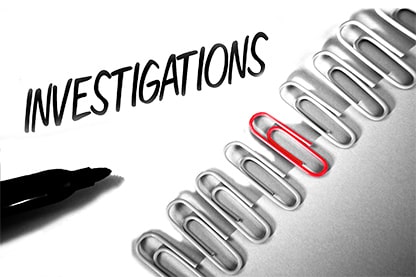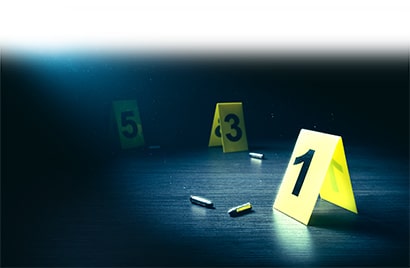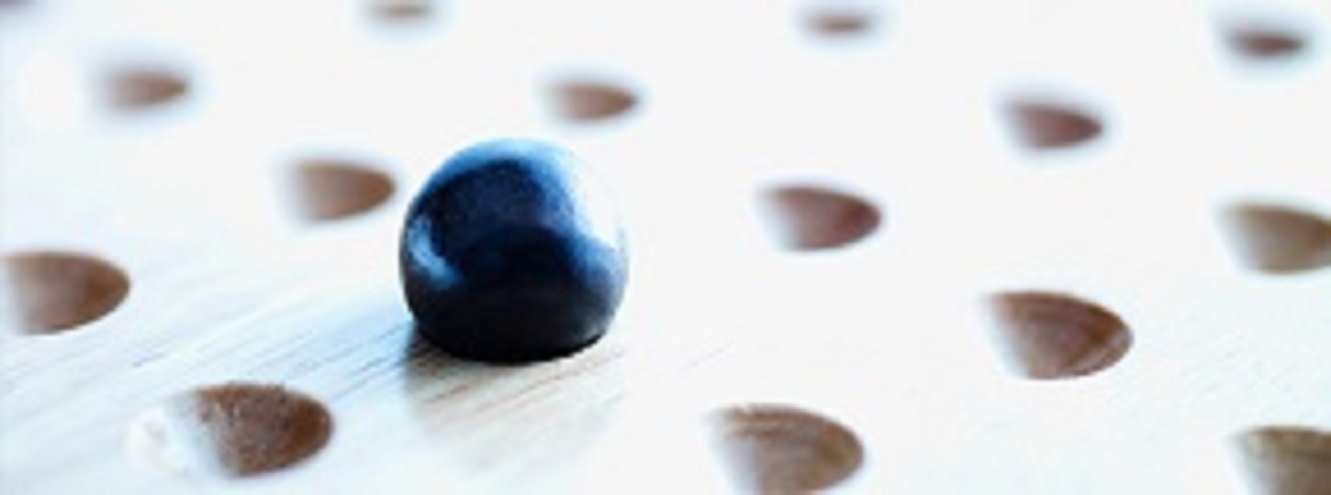Admissibility of forensic evidence in courts – USA overview
Introduction
 Miscarriage of justice is an existential problem, reigning throughout the years with what looks like no end in sight. Worldwide, several people are wrongly convicted and executed for crimes they did not commit. This ultimately leads to the individual who has been wrongly convicted being robbed of opportunities (job, education, etc.,.) and losing social standing. Many of these wrongful convictions are based on forensic evidence found in crime scenes. Thus, came the need to address the issues surrounding forensic evidence, their admissibility in courts and their authenticity.
Miscarriage of justice is an existential problem, reigning throughout the years with what looks like no end in sight. Worldwide, several people are wrongly convicted and executed for crimes they did not commit. This ultimately leads to the individual who has been wrongly convicted being robbed of opportunities (job, education, etc.,.) and losing social standing. Many of these wrongful convictions are based on forensic evidence found in crime scenes. Thus, came the need to address the issues surrounding forensic evidence, their admissibility in courts and their authenticity.
What is forensic science?
Any evidence or trace of physical matching which can be used to identify a missing perpetrator of in a crime scene amounts to forensic evidence. This includes fingerprints, strands of hair, glove prints, tire marks and others.
Technically, forensic science includes applying scientific principles to criminal proceedings; the term "forensic" in itself means "belonging to the law." Forensic scientists are analyzing evidence received from police officers and detectives and preparing detailed reports of their findings. Forensic science encompasses a variety of research areas.
It can point in the right direction to a criminal investigation or provide evidence of the guilt or innocence of a suspect. Most forensic scientists are analysing in either the investigation of the crime scene or the analysis of the laboratory.
How does it help investigations?
The proof helps to demonstrate the existence of a violation in a criminal trial and to decide who the perpetrator is. In general, the jurisprudence behind criminal law recognizes all types of evidence that they have been studied and generated by certain means and laws, as well as the published and discussed debates, under the principle of the freedom of evidence. The evidence can be established by various types, namely flagrante delicto, confession, testimony, evidence, and clues. It was not until the arrival of forensic science to the latter category of evidence occupies a leading position in a police investigation and criminal proceedings.
Forensic science in the index of computer processing equipment brings together professional and forensic police, the ‘Forensic Science Strategy’ policy encompasses both technological methods and techniques and scientific methods of studying, investigating, evaluating and examining evidence in criminal proceedings. This specifically applies to police context and spiralized in applying these procedures and offers permanent police assistance to investigators as prosecutors and training in the battle for offenders' identity.
How reliable is it?
It does not make sense, in the abstract, to test the performance of any forensic technique. A forensic method is only ‘reliable’ in so far as it helps in the context of a specific case to answer the specific questions asked. Asking the wrong questions leads to wrong answers even if the best authentic authorised forensic method or science used. Besides, it is perceived that some forensic techniques have less intrinsic value or even doubtful validity by some commentators. However, these approaches could provide the answer to a question of vital relevance. For instance, instead of pinpointing the perpetrator forensic evidence can at least help eliminate persons of interest.
United States of America
In the US, DNA testing, identifying tool marks, measuring bite marks, or analysing blood spatter is assumed to be reliable, consistent, and valid criminal activity measures. However, there is a growing problem relating to forensic fraud in this region. In 2015, the FBI revealed serious mistakes in criminal proceedings with decades of relying on unreliable DNA analysis in courts. There are 32 defendants sentenced to death among those convicted on fabricated evidence, 14 of whom either died in prison or have already been executed. This problem which was first posed in the early 1920s has been continuing for decades.
General test
 For instance, in Frye v United States [293 Fed. 1013 (1923)] the District of Columbia Court rejected the scientific validity of the lie detector (polygraph) since, at that point, the invention had no substantial general acceptance. The court gave guidelines on the admissibility of experimental examinations as they found it difficult to define just when a scientific principle or observation crosses the line between the experimental or demonstrable levels. The evidential power of the theory must be accepted somewhere in this twilight zone, and while the courts will go ann elongated way toward accepting observational evidence arising from a well-recognized scientific principle, the object from which the inference is produced must be known enough to have achieved general acceptance in the specific field applications. Essentially, in order to apply the ‘Frye Test’, a court had to determine whether a reasonable proportion of the relevant scientific community generally approved the method, methodology and concepts in dispute. That norm has been prevalent for many years in federal courts.
For instance, in Frye v United States [293 Fed. 1013 (1923)] the District of Columbia Court rejected the scientific validity of the lie detector (polygraph) since, at that point, the invention had no substantial general acceptance. The court gave guidelines on the admissibility of experimental examinations as they found it difficult to define just when a scientific principle or observation crosses the line between the experimental or demonstrable levels. The evidential power of the theory must be accepted somewhere in this twilight zone, and while the courts will go ann elongated way toward accepting observational evidence arising from a well-recognized scientific principle, the object from which the inference is produced must be known enough to have achieved general acceptance in the specific field applications. Essentially, in order to apply the ‘Frye Test’, a court had to determine whether a reasonable proportion of the relevant scientific community generally approved the method, methodology and concepts in dispute. That norm has been prevalent for many years in federal courts.
Modification
The Frye Test standard was remodified in 1975 when the federal courts adopted Federal Rules of Evidence. This brought about more flexibility as it did not impose the strict general acceptance requirement. These rules also contained guidelines on evidence by experts. Their response to the Frye Test standard came to be used more widely as it did not necessitate purely general acceptance and was seen as more versatile. The first edition of Federal Rule of Evidence 702 requires that a person certified as an expert can testify in the form of an opinion if: -
- The science, technological or other specialized knowledge of the expert may help the trier in interpreting the proof or in assessing the truth in dispute.
- The evidence was founded on sufficient information and truth.
- The evidence is the result of reliable methods and values.
- The expert adapted the theories and techniques to the facts of the case with accuracy.
Which test to use
Although states are allowed to enact their own laws, many Federal regulations have been implemented and changed, including those governing expert testimonies. But the question remained: does the precedent set in Frye v United States overthrow the Federal rules which were adapted? In a 1993 decision, Daubert v. Merrell Dow Pharmaceuticals, Inc,[509 U.S. 579 (1993)]the US Supreme Court ruled Federal Rules of Evidence surpasses the Frye general test. In Daubert v. Merrell Dow Pharmaceuticals, Inc, General Electric Co v Joiner [522 U.S. 136 (1997)]and Kumho Tire Co v Carmichael [526 U.S. 137 (1999)], the Courts clarified that, while the federal standard required general acceptance, trial judges are the ultimate arbiter and ‘gatekeeper’ on the permissibility of evidence and the recognition within their own courtrooms. In making such decisions the judges should consider the following:
- What is the underlying principle and was it tested?
- Is the methodology regulated by standards?
- Has peer review or publishing been subject to the concept or technique?
- What is the established or expected level of error?
- Is the principle acknowledged in general?
- Has the specialist found possible theories adequately?
- Has the specialist extrapolated unjustifiably to an unfair inference from an agreed premise?
The Daubert ratio further recognizes that questions regarding shaky evidence could be addressed by cross-examination, analysis of evidence to the contrary, and thorough guidance on the standard of evidence. This Daubert principle is now subject to medical expert testimony in many countries. But some jurisdictions still use the Frye standard's update.
The issue with this
There is a long-standing issue of presentation and hearing of cases involving forensic as a civil or criminal proceeding. It was argued that since judges have the power to make the often-subjective determinations which result in forensic evidence being accepted and removed, they may also have a general tendency to support one side's proof over the other. A lively discussion arose, culminating in general agreement that judges can implement Daubert to criminal and civil cases separately. Many researchers say that experimental and technical proof is more likely to be used to criminal cases in favour of the government and rejected from civil cases where defendants give it. Therefore, there was a need for experts to check the credibility of forensic science presented in courts.
Why the experts?
Over the years, it has become increasingly difficult for the average juror to grasp the evidence presented at the trial. Through relying on an expert witness to explain complicated facts and research in an easy-to-understand way, prosecutors in the courtroom can interpret their arguments correctly and judges can be better equipped to weigh the evidence. However, this gives rise to further difficult questions. How does the court decide if an applicant is an expert? Which requirements do they have to meet in order to give their opinion in a trial court?
Such issues are also dealt with in Rule 702. It only requires "trained... through expertise, ability, practice, learning, and schooling" specialists. Typically, a substantial amount of training and experience is needed to be deemed a genuine specialist in any area. The various forensic professions follow different training plans, but most of these provide in-house training, tests and realistic reviews, as well as continuing education. When training examiners for interrogation in a courtroom, oral presentation preparation, like moot court knowledge (simulated court proceeding), is very beneficial.
The individual who presented the laboratory document and takes credit for the study by releasing a report will usually act as the court expert. The defendant may also turn to their own experts to counter this evidence, and both parties are subject to that court's level of competence (Frye, Daubert, Law 702). Obviously, individuals who appear as expert witnesses need to understand how to respond to such queries. Regardless, it is essential to note that the decision if forensic evidence is admissible is solely up to the judge presiding the case.
More recent reforms to check the credibility
The National Academies Study 2009 (NAS Report) called for all forensic science service providers to be compulsory certified. Recommendation 7 of the NAS report states that all laboratories and facilities (public and private) should be certified and that defined and recognised international standards such as those issued by the International Organization for Standardization (ISO) should be taken into account when deciding acceptable accreditation standards. Forensic science suppliers may expect a necessity for them to be accredited by authorized training agencies, although not entirely in action. Accreditation of the crime laboratory is thus one way of conveying to the court that testing procedures follow high standards.
Forensic Laboratories
Laboratories certified under ISO 17025 are required to keep track of a number of quality assurance documents, retain standardized research procedures (which may vary periodically), keep records of reagent use and storage, repair of facilities, employee training and ability evaluation, employee mistakes, and a variety of other performance-related issues in laboratory operations.
Forensic science suppliers may expect a necessity for them to be accredited by authorized training agencies, although not entirely in action. Accreditation of the police laboratory is thus one way of conveying to the court that testing procedures follow high standards. Laboratories certified under ISO 17025 are required to keep track of a number of quality assurance documents, retain standardized research procedures (which may vary periodically), keep records of reagent use and storage, repair of facilities, employee training and ability assessments, employee mistakes, and a variety of other performance-related issues in laboratory operations.
Laboratory Information Management Systems, or LIMS, have been built to handle the broad range of information collected by forensic laboratories. Systems can collect information from people, observer teams, research areas, and the whole facility to generate documents that can demonstrate to a jury that the operation of the laboratory follows standard protocols and is conducted correctly in a given case. However, while a LIMS cannot compel examiners to use controls, it can implement reporting whether controls have been used in an examination and impose tracking of the effects of such controls, such as positive control, negative control, reagent blanks, etc. Although crime laboratory accreditation can never conclusively guarantee that errors have not happened, it is an important step to reveal the level to which laboratories uphold quality control, and laboratory accreditation and LIMS schemes are ways to demonstrate the degree of effort.
Certainty of opinion
Another question to explore is how we convey degrees of certainty— how certain is an individual’s (no matter how qualified) understanding of something? During one point, experts were allowed to state that two proof objects were different and originated from a common source, with virtual certainty. It was not unusual for a fingerprint specialist to claim the two prints come from the same individual to anyone else's exclusion. A statement today that communicates the degree of certainty is troublesome.
The primary cause of this transition is DNA evidence, and probabilistic assumptions are seen as the correct way to express degrees of possibility. But here's a complication: how can they convey the probability of two items coming from a common source if their frequency chances are unknown? With a shoe print of healing or toe wear patterns and gouges, should we give the object a statistical likelihood quality, and how can we testify when those changes may not be understood until sometime in the future, if ever?
Conclusion
 In forensic science, chemistry plays an indispensable role, which plays an increasingly vital role in our judiciary. Chemistry is used in all forms of forensic evidence— from fingerprints and blood to DNA. But it is not possible to use forensic science alone to determine guilt. First and foremost, every judicial system is a human endeavour, and human beings will always be fallible. The degree and extent of how this forensic evidence is to be judged as credible or admissible depend on trail judges and experts on the topic but ultimately and unfortunately there is always a risk of such evidence being misused and manipulated. Nonetheless, before these problems are fully addressed
In forensic science, chemistry plays an indispensable role, which plays an increasingly vital role in our judiciary. Chemistry is used in all forms of forensic evidence— from fingerprints and blood to DNA. But it is not possible to use forensic science alone to determine guilt. First and foremost, every judicial system is a human endeavour, and human beings will always be fallible. The degree and extent of how this forensic evidence is to be judged as credible or admissible depend on trail judges and experts on the topic but ultimately and unfortunately there is always a risk of such evidence being misused and manipulated. Nonetheless, before these problems are fully addressed
 Русский
Русский
 English
English 官话
官话 português
português عربي
عربي
 Türk
Türk 






.jpg)

















